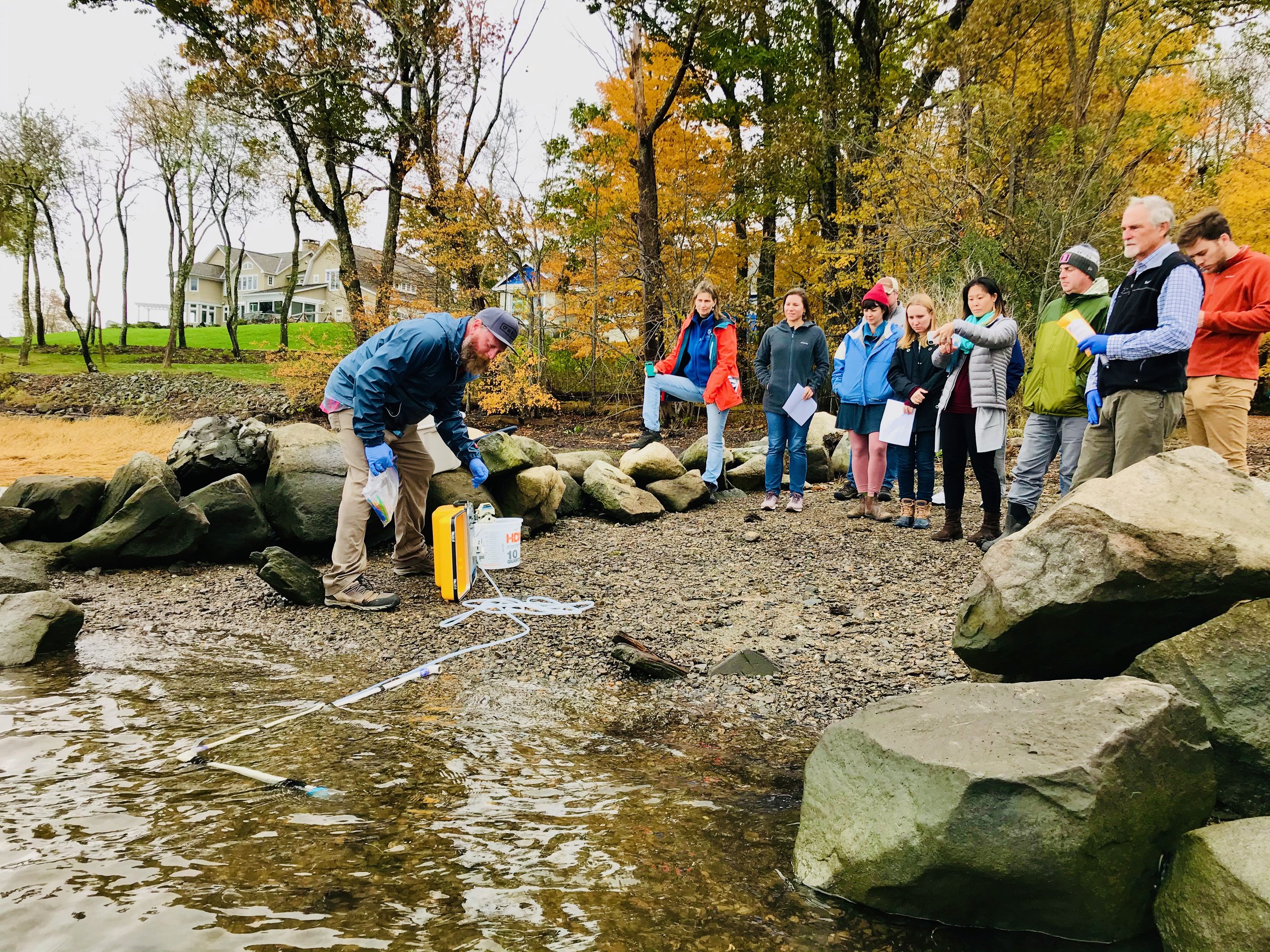
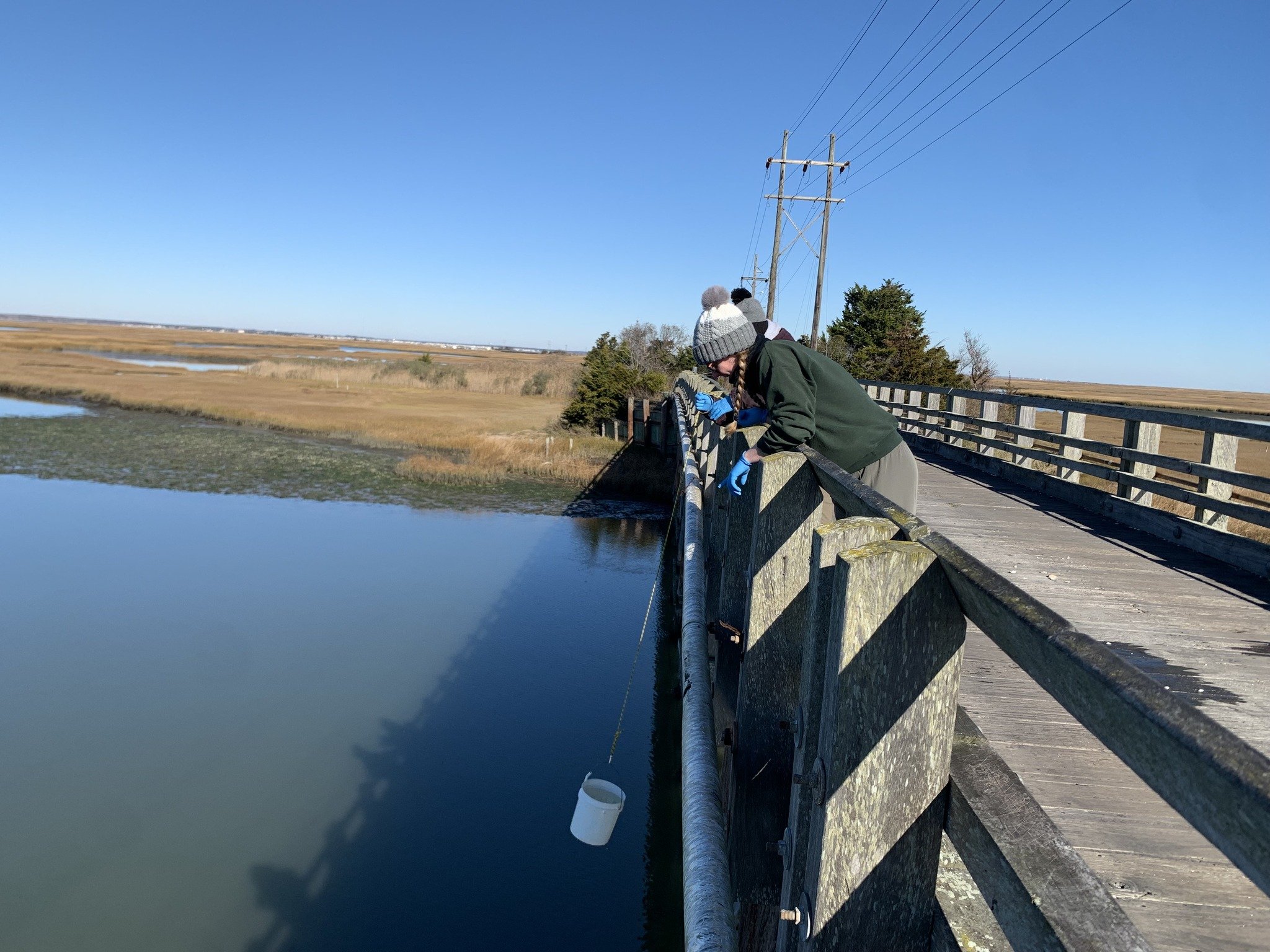
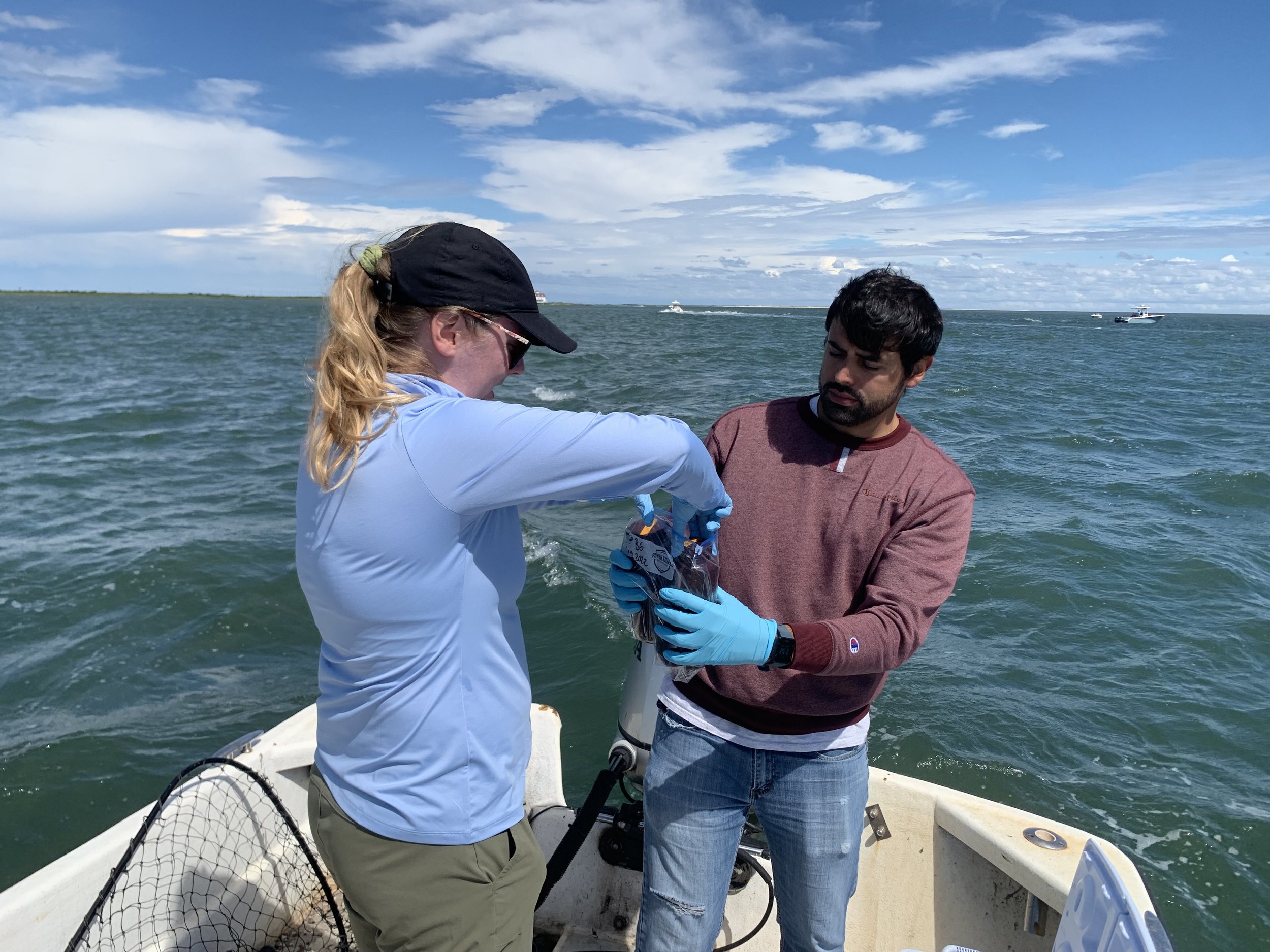
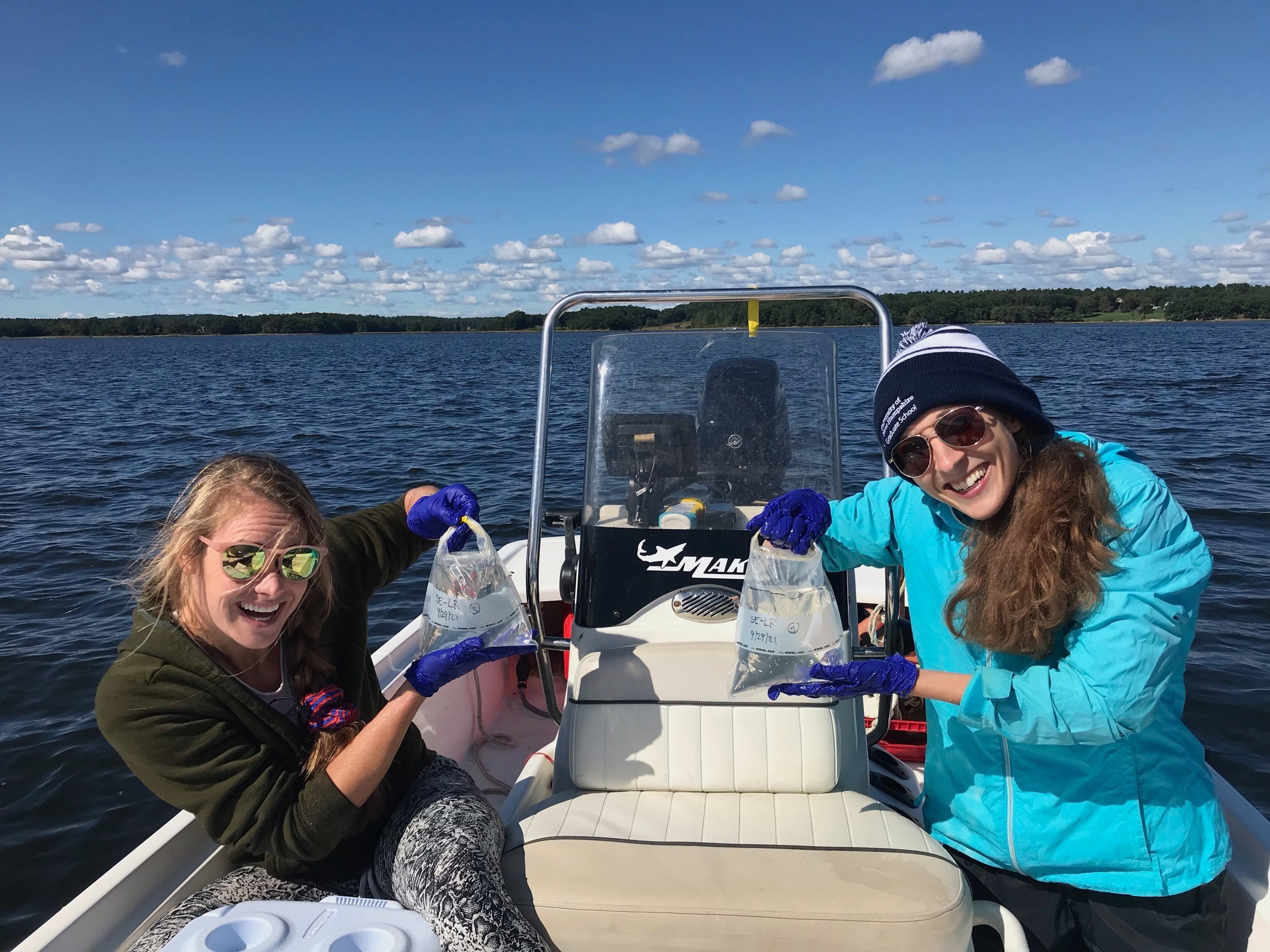
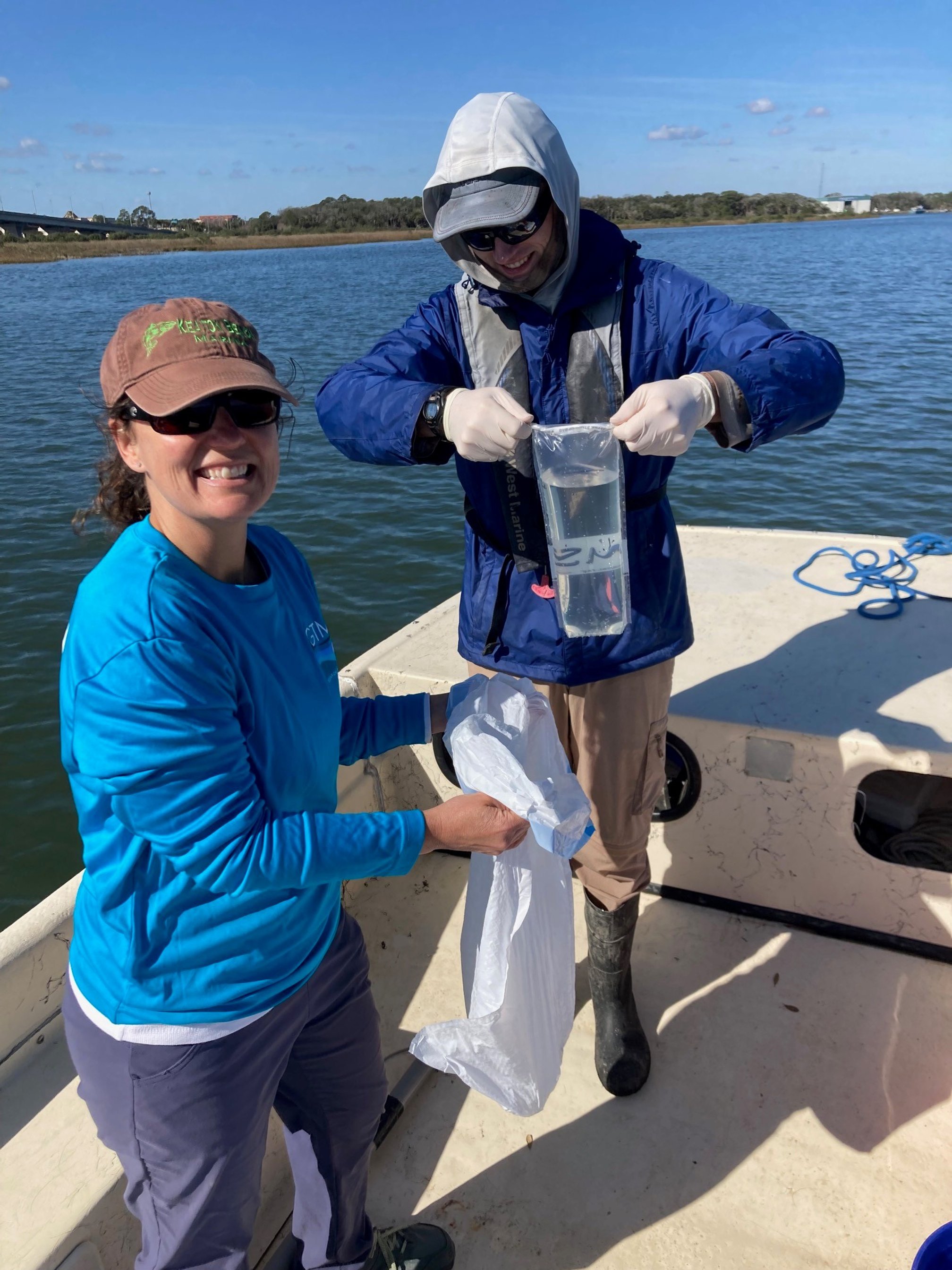


New Technology for Old Problems
How can eDNA support the understanding and management of estuaries?
10 NERRs are sampling their water to survey fish communities, develop biodiversity indices, and explore a standardized eDNA monitoring network.
Gabby prepares for filtration, GTM NERR
eDNA in estuaries
Biological monitoring programs are vital for effectively managing estuaries and coasts, but they can be costly and harmful to the targeted species. However, recent advancements in DNA techniques enable us to identify organisms in an area by analyzing the DNA they leave behind. This type of DNA, known as environmental DNA (eDNA), originates from various sources like feces, gametes, scales, and shed cells of organisms. Fortunately, we can easily collect eDNA from samples of water and sediment. By studying eDNA from these samples, we can identify numerous species without the need to capture live animals or plants.
Collecting water samples with Sam, Apalachicola NERR
Our Approach
Beginning as a pilot with scientists and staff from the University of New Hampshire and 4 reserves, eDNA sample collections and analysis protocols were designed. In 2021 the project expanded to 10 reserves.
Our goal is to assess the value of eDNA monitoring at research reserve sites and provide end users with key training to support informed decisions regarding the implementation and use of eDNA monitoring in estuarine systems
Prepping the lab, Apalachicola NERR
OPPORTUNITY! Are you interested in using eDNA but not sure where to start? Are you a state or local agency, tribe, or non-profit? Do you work in a coastal region? We can provide no-cost advice and support. HERE for more info.





